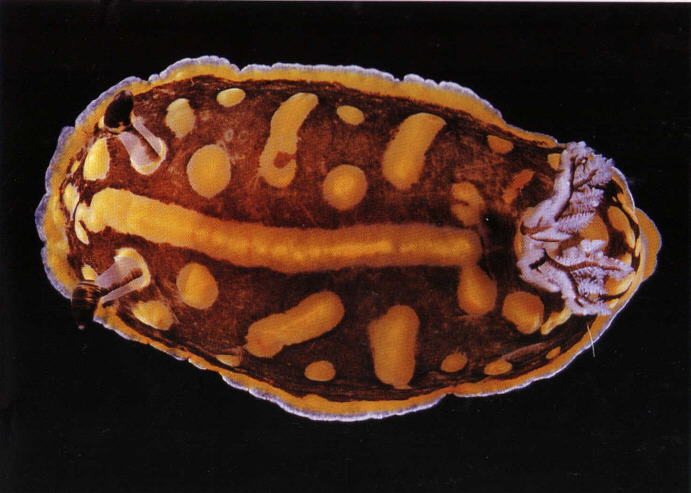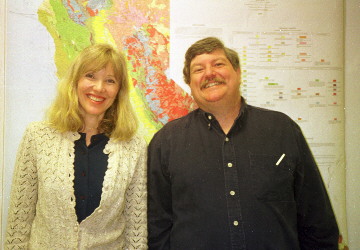 |
Rottnest Island, Western Australia
Halgerda theobroma
Fahey and Gosliner, 2001
This Halgerda species is a real beauty. It's unusual for a Halgerda because it doesn't have the high body profile found in most other species of the genus. It also lacks the usual tubercle or ridge pattern found on most Halgerda. Instead, it has a central yellow ridge that's outlined in white, with slightly raised yellow splotches of color very evenly spaced along the outer edge of the mantle. There's also a wide, yellow band along the mantle edge. The foot has a yellow margin too. Halgerda theobroma (named after cocoa due to its coloration) shares some reproductive similarities with other Halgerda species.
This species can be found from 6 meters down to 30 meters, and so far, only in Western Australia.
Citation
Shireen J. Fahey and Terrence M. Gosliner. 2001.On the genus Halgerda (Nudibranchia: Halgerdidae) from Western Australia with descriptions of four new species. Bollettino Malacologico, Roma, 37 (5-8): 55-76, 2001-Societa Italiana di Malacolgia
Top photo courtesy of Clay Bryce
Taxonomic text courtesy of Shireen Fahey

After having completed my Masters Degree in Marine Biology at San Francisco State and the California Academy of Sciences with Terry Gosliner, I decided I was having too much fun to stop. I had worked on the genus Halgerda , and had described 15 new species during that time. So what do you do to continue nudibranch research? Having heard no other reasonable suggestions, I decided I had to go for my Ph.D. It was deciding on my research questions that led me to Queensland Australia. First of all, this location is rather well known for having superb coral reefs, and incidentally where some Halgerda just happen to call home. Secondly, the people doing the particular marine research I am interested in are here at the University of Queensland. My primary advisor is Associate Professor Mary Garson in the Department of Chemistry. Terry is my co-advisor for the systematics aspect of my research. |
Send Shireen email at sfahey@mailbox.uq.edu.au
Send Terry email at tgosliner@calacademy.org
